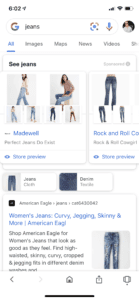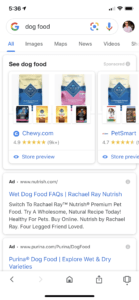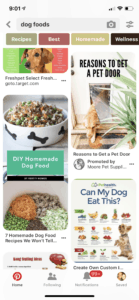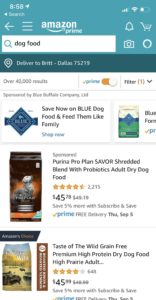
Price Glomski, executive vice president of emerging commerce, PMG
It’s early on Monday morning as I wait in line at our neighborhood coffee shop. I’m still waking up and hopeful for this particular 12 oz drip, no-room, please.
Out of bad habit, my phone is open and I am bouncing between Instagram and email. This is a subconscious ritual that is wonderfully interrupted by the convenient glass pastry display and the bready assortment within it. I can assume this particular point of sale pastry-strategy has at least a 25% conversion rate if not a little higher. This 3×3 window of organized sweet and savory isn’t overwhelming or picked over. But which pastry will win my heart?
The counter has just the right amount of product on its three shelves and oddly enough, the proprietor has seemingly handpicked the assortment to my current palette along with the 200 other regulars any given weekday. This product added to my customer experience while informing me of other products that I have a high likelihood of appreciating.
My relational and mildly off-kilter marketing brain went straight to the Google shopping format. Like my beloved coffee shop proprietor, Google finely targets me with an assortment of potential brand morsels on its digital counter, the ever-evolving showcase shopping ads.
This 3-year old PLA (product listing ad) descendant is now finding traction. Showcase Shopping ads arm advertisers with the ability to curate a group of related products and present them together. The format is a data-driven way to align a brand and its product assortment with an undecided customer. This ad format is intended to drive a brand decision through rich visual results in response to commonplace terms, like jeans or dog food.
Once a user clicks on a Showcase Shopping ad, the ad opens to a full-screen experience with a grid of products most related to the user’s recent search behavior. The advertiser is responsible for creating product groups that help Google map said products to the customer experience. One of the noted benefits of this shopping format is the brand’s ability to advertise four products or 400 if your strategy entails category depth.
This ad unit packs a big punch in this mini yet engaging brand sampling.


According to Google, on average, the platform sees about 80% of traffic from Showcase Shopping ads to retailer sites are from new visitors just discovering the brands.
Get Creative with the Recipe. It doesn’t have to Be Exact.
1. Yes, You Should Believe in NonBrand – Google continues to fine-tune its non-brand results while the traditional PLAs are foundational to that performance shift. Seeing is believing, right? Identify a top group of products and build the campaign to effectively syndicate to broader category terms.
2. Try Owning a Category During a NEW Product Launch – This particular format adds a lot of value given an assertive SOV strategy. Use the broad targeting to own or test-in new product awareness or potentially market sizing. Pair this category investment with 5+ creative options, including header image diversity and text/copy options.
3. Enhance Header Images – Break up ad blindness by testing different imagery within the header. Many brands use their typical product page photography, which is understandable, however, look at testing lifestyle photography, images depicting movement, and Instagram/Pinterest top engaged images. Another thought, do the opposite of your competition. If they go white background, you go with a splash of color.
4. Work in Seasonal Tactics, such as Gift Guides – Not overly innovative but functional. Set up a campaign to signify a holiday gift guide. Do so by marking gift guide SKUs in the feed with relevant holiday messaging and detail. The same would apply for Black Friday and Cyber Week promotion.
This format is being consumed across other platforms.
Other platforms have their version of this newish search format like Pinterest Promoted Video (max ratio) or the Promoted Carousel. Somewhat similar to Google’s 80% statistic, Pinterest touts that 77% of users have found a new brand or product while on the platform. One might argue that we are comparing apples to oranges, however, the key insight is that rich visual results like lifestyle imagery and video are taking more share of voice.

Amazon’s Sponsored Brand ad unit is presumably the closest version to Google. Unlike Google’s results, this adjacency includes sole ownership of the masthead spot with the ability to serve up to three products in the ad unit. Following the new user theme from both Google and Pinterest, Amazon has a specific “new-to-brand” metric that brands are able to report on-demand. In most program insights, we see an average of 75% new-to-brand within this particular format.


How will they evolve?
Video – Although video has been available since the fall of 2018, we should expect this messaging type to become a larger share of the results. The prohibitor, like other channels, is that brands tend to lack video depth across the board. If that’s the case for you, incorporate social video to start and eventually tailor for audience discovery on Google.
YouTube – With the logged-in subscriber base of 1.9 billion and in an average month, 8 out of 10 18-49 year-olds watching YouTube, there is a 100% chance that this format will play an innovative role in the channel.
Local Inventory – Given the success of Google LIA (local inventory ad format), we should eventually see this detail alongside the product images once you click into the ad format.
Google Express Integration or a Version of It – They will find a way to succeed in the last mile. Google Express doesn’t currently aggregate products in centralized distribution center(s) like Amazon which creates a lot of complexity. The platform relies on retailers to pick and pull products which delays shipping and adds other infrastructure challenges.
This Google counter space is absolute
It should change in each season, while each brand should make it their own. A single recipe or approach will be overlooked and underserved. Google Shopping, and more specifically, Showcase Shopping Ad types should play an important part in your customer acquisition and even in a retention strategy.
If you are seeking a prediction, we should see triple-digit percentage growth year over year for the showcase format, which will be comprised of some traditional PLA and nonbrand share along with increased impression volume in mobile for consumers in the discovery mode.
With a looming recession, retailers should be using this time to establish new customer relationships while solidifying loyalty through product awareness and innovation.
PMG is a digital marketing agency based in Fort Worth, Texas.
Favorite